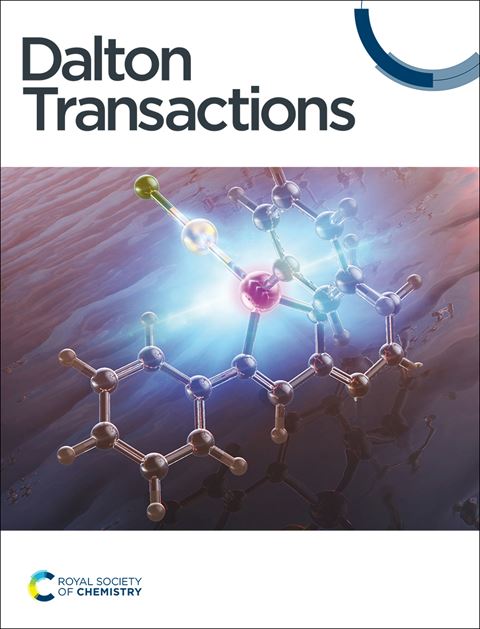Synthetic and Structural Investigation of New Au(I) Complexes Featuring Bidentate Imidazole-2-thione Ligands
IF 3.5
3区 化学
Q2 CHEMISTRY, INORGANIC & NUCLEAR
引用次数: 0
Abstract
Gold(I) imidazole-2-thione (IMT) complexes [Au(IMT)2]+, [Au(diIMT)]+ or [Au2(diIMT)2]2+ were synthesized by reacting Au(SMe2)Cl with ligands containing one or two IMT groups. These AuI-IMT complexes were characterized by X-ray diffraction, NMR spectroscopy, and mass spectrometry. The IMT ligands provided a linear coordination array around the AuI center, with IMT C=S bonds orthogonal to the S-Au-S axis. In some cases for complexes of form [Au(IMT)2]+ and [Au(diIMT)]+, the cations aggregate to form dimeric or trimeric units in the solid state, and exhibit inter-cation Au...Au distances in the range ~3.03 - 3.07 Å, indicative of aurophilic interactions. The new AuI-IMT complexes exhibit NMR and mass spectra and that are generally consistent with the structures of cations of form [Au(IMT)2]+, [Au(diIMT)]+ or [Au2(diIMT)2]2+ as seen in the solid state. In two cases, however, 1H NMR spectra suggested mononuclear and dinuclear complexes [Au(diIMT)]+ and [Au2(diIMT)2]2+ existed in equilibrium, undergoing exchange reactions rapidly on the NMR timescale. Density functional theory (DFT) analysis supported the experimental conformations, showing agreement between the energetically favorable conformers and experimental structures. Photochemical and electrochemical properties were reported, with only one complex being strongly luminescent. The luminescence, at least in solution, did not appear to result from aurophilic interactions.求助全文
约1分钟内获得全文
求助全文
来源期刊

Dalton Transactions
化学-无机化学与核化学
CiteScore
6.60
自引率
7.50%
发文量
1832
审稿时长
1.5 months
期刊介绍:
Dalton Transactions is a journal for all areas of inorganic chemistry, which encompasses the organometallic, bioinorganic and materials chemistry of the elements, with applications including synthesis, catalysis, energy conversion/storage, electrical devices and medicine. Dalton Transactions welcomes high-quality, original submissions in all of these areas and more, where the advancement of knowledge in inorganic chemistry is significant.
 求助内容:
求助内容: 应助结果提醒方式:
应助结果提醒方式:


